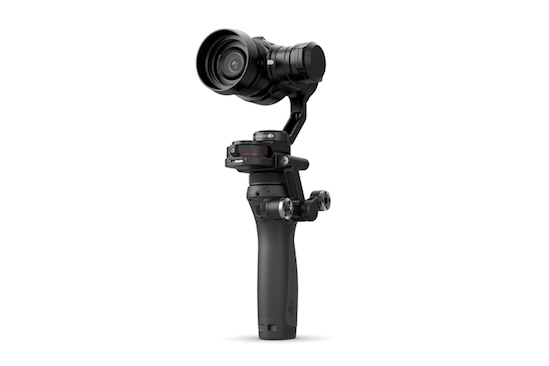
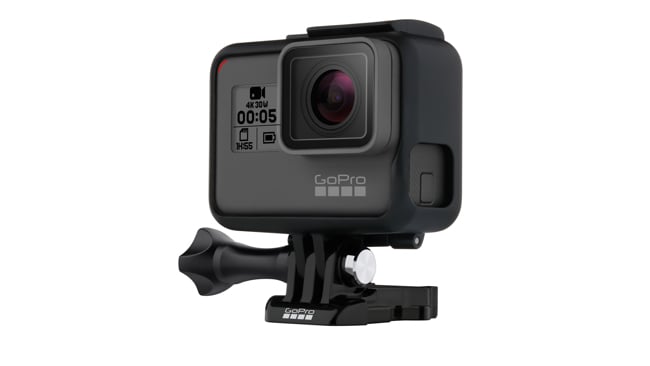 Does the GoPro Hero5 Black still rule the action cam roost?
Does the GoPro Hero5 Black still rule the action cam roost?
If you ask anyone about action cameras, and the best one to buy, the vast majority of people would say one word: GoPro. But, as the saying goes, other action cam alternatives are available, and some of them are quietly compelling.
Whilst it is true that GoPro is still very much a force to be reckoned with, there are many other alternatives that are available. And some of them are gaining a reputation for offering picture quality and specifications in excess of that produced by the market leader, for apparently less price.
Here’s a look at some of the best-specced cameras on the market today. I should add that there are other options above and beyond these as well since the market has opened up hugely in the last few years. Here though the ones that have caught our eye.
Yi 4K+
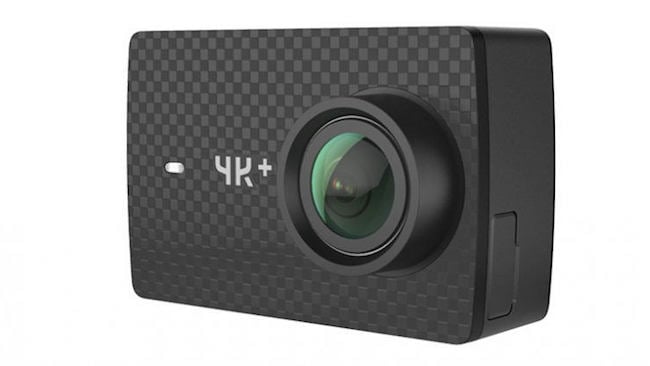
The Yi cameras are making a lot of waves at the present time, and for good reason. For £335 you get a camera with pretty much all the picture quality and functionality as the GoPro Hero5, and then some. Capable of 4K at 60fps, 1080p at 120fps, a claimed top bitrate of 120Mbps, a built-in touch screen, and a claimed battery depletion time of 120 minutes, and you have one very competitive system.
The Yi uses a faster Ambarella H2SOC processor than the GoPro, as well as using the newer Sony IMX377 1/2.3” sensor. Other features include dual band wifi, live broadcast functionality, electronic stabilisation (even in 30fps 4K modes), lens distortion correction, USB Type-C connectivity, voice control, and RAW photo ability.
The downsides? The Yi still needs to be mounted inside a waterproof housing if there is a risk of it taking a dunking, making it a bit bulkier than the competition, and the LCD screen is nigh on impossible to see outdoors.
Sony FDR-X3000R
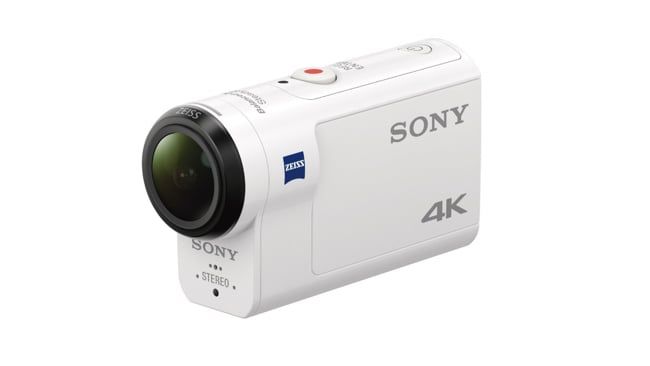
The FDR-X3000R is the flagship Sony Action Camera. It has an RRP of £500, which isn’t cheap, but you do get the reassurance of Sony build quality and reliability. Capable of 4K at up to 100Mbps, like the Yi 4K+, such specifications start to show up the limitations of the Hero5.
The big news with the X3000 is that unlike its competitors, this camera features optical stabilisation. This is quite a big thing since it means truly reliable stabilisation is available in 4K video modes.
Sony claims that aliasing, moire, and also colour issues are brought to a bare minimum with this camera compared to its rivals, thanks to its full pixel readout. XAVC S is utilised as the main recording format, and manual control is also offered. Stills images are 12MP, and 4K recording is limited to a top framerate of 30fps. Although for professional use the camera records timecode and user bit information for easy synching in multi-camera setups.
Other features include live streaming, loop recording, and multi-camera control. The Sony also requires an additional case for use in waterborne situations where it risks going under, and it lacks the built-in LCD for framing that other cameras here feature. However, it does offer a live view through the included remote. This can also be mounted via a finger clip mount at the rear of the camera, or be wrist mounted for easy access.
Nilox Evo 4K+
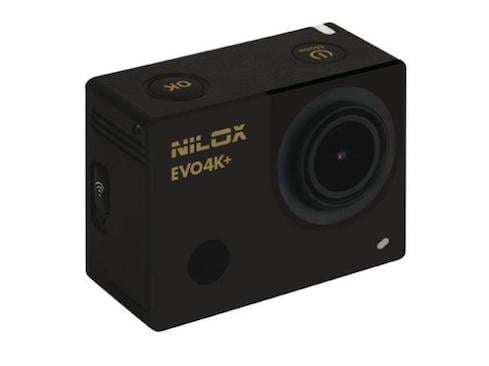
Nilox, is another fairly new contender on the scene and has a wide range of action cameras to suit all budgets, but this is its flagship model. At around £299 it would appear to offer good bang for the buck if you just want the basics.
Main features include 16MP stills, electronic stabilisation, and a built-in LCD touch screen display. The Evo would appear to lack many of the bells and whistles of the other cameras here. For full waterproofing an external housing is also required, and 4K is limited to 25fps maximum.
TomTom Bandit
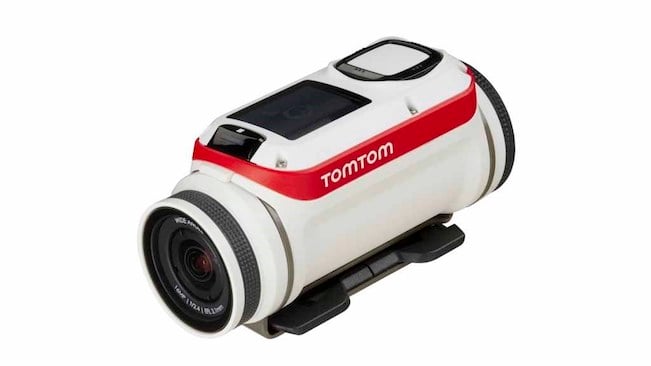
The TomTom Bandit is a good solid contender. By current standards it is lacking in some areas, such as being limited to 15fps in 4K modes. But the build quality is very good, and it offers some clever features. These include being able to take the battery stick straight out of the camera and plug it into the USB port of your computer. A claimed 3hr battery life, and a clever quick release mounting mechanism that is designed such that it can be used easily while wearing thick gloves also feature. 16MP stills capability is on offer, but if slow motion video is your thing, with only 60fps being available at 720p, you might want to look elsewhere.
The Bandit also includes a clever phone-based editing app that can create highlight videos very quickly and easily. Once again though, for full waterproofing the Bandit requires a splash cover. But if you are a technophobe, while the Bandit may well be lacking some of the higher end video capabilities of other cameras here, it will also be one of the easiest to use.
Garmin VIRB Ultra 30
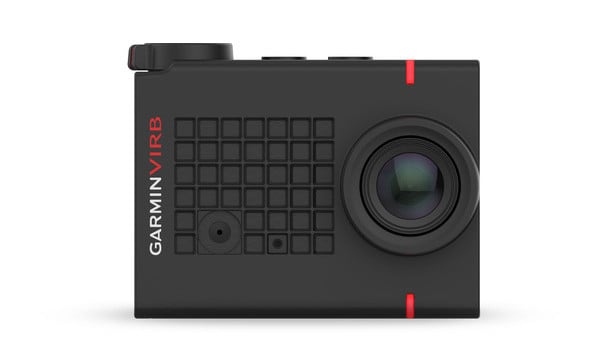
The VIRB is another action camera that has quietly, but surely, been making progress over the years. This is the top-end Ultra 30 model, but there is also a 360 version available as well. The Ultra 30 retails at £389.
The original VIRB had a rather strange form factor, but this latest one falls back on the traditional GoPro form. The camera includes electronic stabilisation up to 2.7k resolutions. Abuilt-inn LCD touch screen on the back of the camera allows easy control over functionality. Usefully, just like the Hero5, the Ultra 30 is waterproof down to 10m without the included additional waterproof housing. So for most water sports, the camera should be perfectly usable without the need for the bulkier housing, thus making it one of the more practical cameras here. However, the cage mount required for this is not included in the package.
The Ultra30 also features voice control, and the unique ability to pair it with additional sensors, such as heart rate monitors, with the ability to overlay such information over the final videos using the Garmin mobile and desktop apps. Battery life is okay, with a claimed 1hr and 15 mins at 4K 30fps. While it cannot record above 30fps in 4K modes, you can obtain 60fps footage at 2.7K, making it fairly capable on the slow motion front, and raw photos can be taken, too.
DJI Osmo
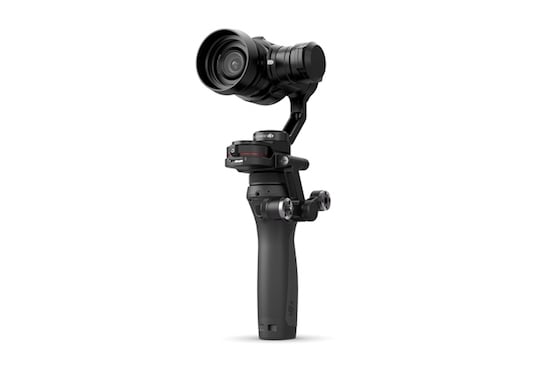
The DJI Osmo? Absolutely. The Osmo may not be waterproof, but it is compact, and it can be mounted in places familiar to most action cameras, such as on a chest mount, mountain bike handlebars etc. If you want truly smooth footage, albeit with a bit more bulk, the Osmo is a prime contender.
With a range of camera options, from versions that take mobile phones, through to the high end X5R (with the promise of an X5S version in the future), this system could take some pretty incredible footage. The only question is how much you would really want to risk it in some of the dicier situations! Nonetheless, if you want to intercut otherwise unobtainable action points of view with higher end cameras, you might want to take a look at one.
GoPro Hero5 Black
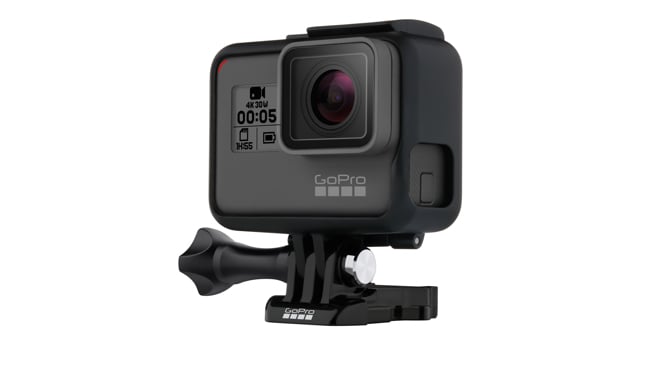
I have taken my time getting to this one. We all know GoPro, and of late it has become fashionable to bash them a bit, in my opinion quite unfairly. The Hero5 arrived to an underwhelmed audience. 4K is still limited to 30fps due to the processor used. However personally I feel that the Hero5 Black is still one of the best contenders on the market.
For starters it is small, and with the integrated touch screen LCD it is waterproof to 10m without the need for a housing. The interface is intuitive and responsive, and the screen is viewable even in bright light. This might seem like a small thing, but the screens on some of its cheaper rivals are often completely impossible to view outside.
Voice control is featured, and quite responsive, and the camera now features electronic stabilisation up to 2.7K as well. ProTune modes and raw stills capability ensure that the maximum dynamic range can be squeezed from the sensor, albeit in highly compressed 60Mbps 8-bit form for video.
A key area where the Hero5 excels over rivals is when it comes to sound. Not only has GoPro put a lot of effort into improving the audio capture capabilities, the camera can also be set to record separate unprocessed PCM files for each of the three mics alongside the video. The fact that most water sports will not require the additional housing means that audio should be superior to its rivals for most activities.
Conclusion: GoPro still the leader - just
As I mentioned at the head of this article, this list is by no means exhaustive. The thing to consider here is that there is no free lunch. While some of the GoPro alternatives offer some great specs, personally I would forego some of them for the sheer convenience of going for a model that does not require a bulky, and sound ruining, waterproof housing. The Sony for example, has fantastic specs, but it is by no means small, when compared to alternatives. Plus, of course, you always have the issue of mounts and legacy equipment.
At £399 the Hero5 Black isn’t cheap, but it is by no means out for the count, and it certainly isn’t the priciest camera here. But it is good to know that competition in this area is seriously heating up.
Tags: Production


Comments